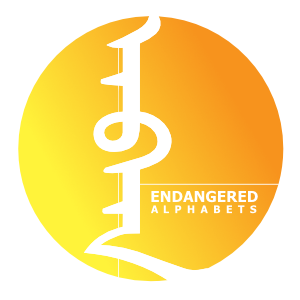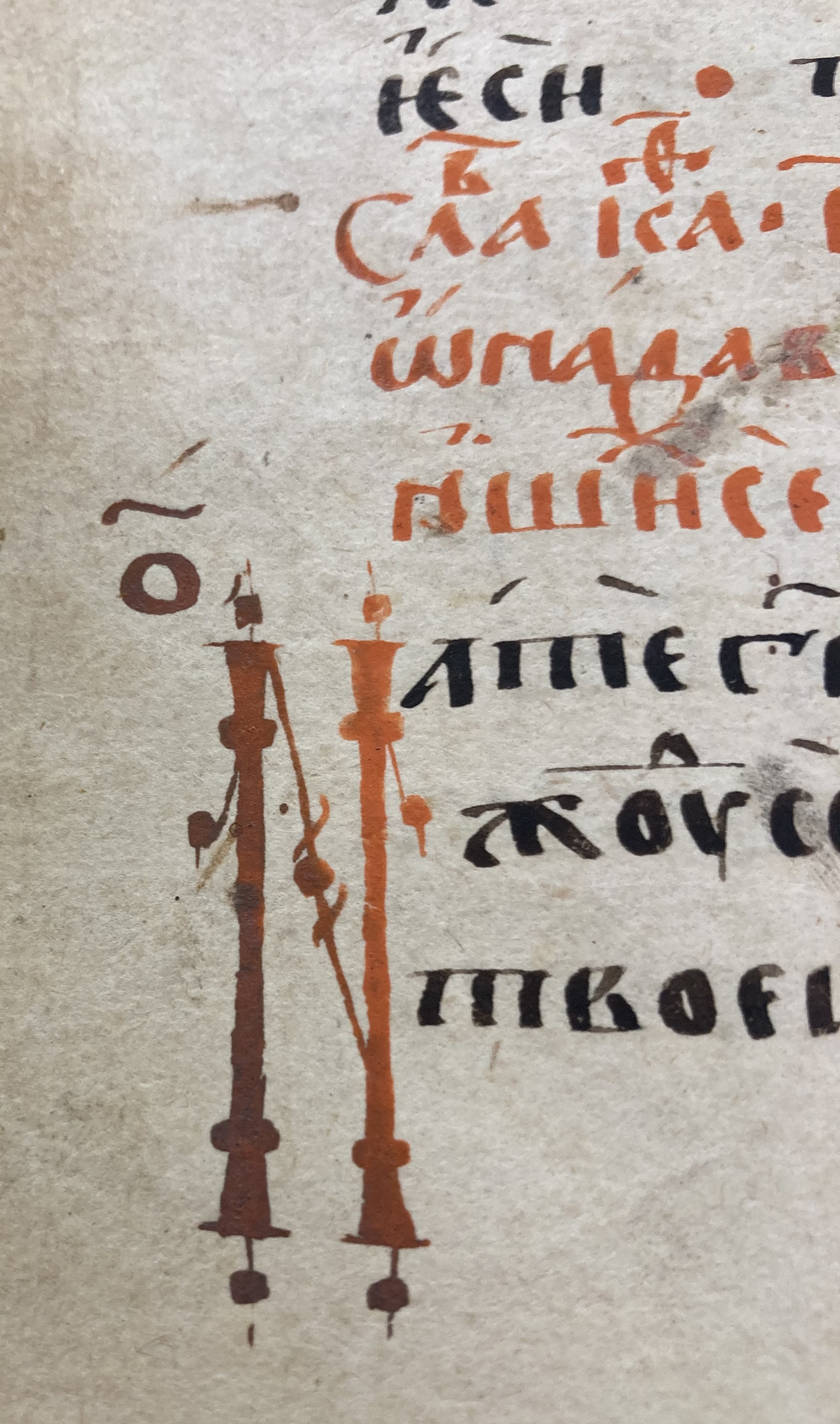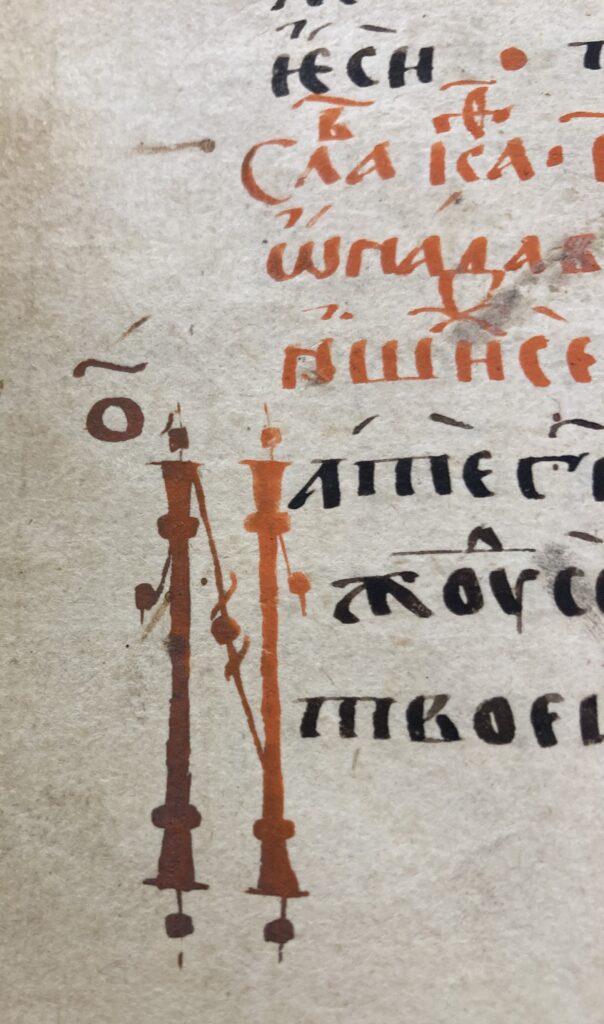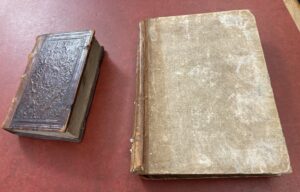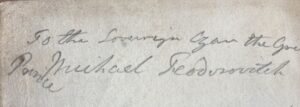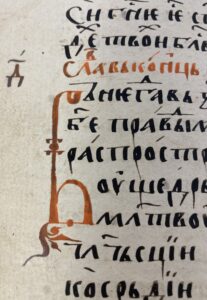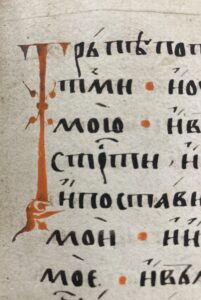Znamenny Musical Notation
On Monday morning (that is, September 9), I had an adventure beyond a geek’s wildest dreams. In Cambridge for a couple of weeks to do endangered alphabets research, I went to the Cambridge University Library and, casting around for somewhere to start, I asked Frank in the Manuscripts Reading Room for a couple of books that the card catalogue (yes, actual cards) said were in Old Church Slavonic, in the hope of finding and photographing a manuscript in the Glagolitic script.
He vanished into the shadows and emerged 45 minutes later with two books, clearly old.
I was slightly disappointed: I hoped that “manuscripts” meant loose sheets of paper, parchment or vellum, fraying at the ages, trinkets of time itself. No matter. I picked up the smaller one (Ff.6.23), which according to the spine was called Psalterium Russicum–the Russian Psalter. Imagine my astonishment when I opened to the flyleaf and saw…
In case you can’t read this, it’s a dedication to “the sovereign Czar the great Prince Michael Feodorovitch,” grandfather of Peter the Great. What? I say, whattt??
This wasn’t the book’s only regal connection. Frank explained that the book was in a collection owned by the Bishop of Ely, and was subsequently bought by King George 1, hence his bookplate inside the front cover……
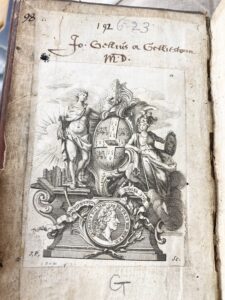
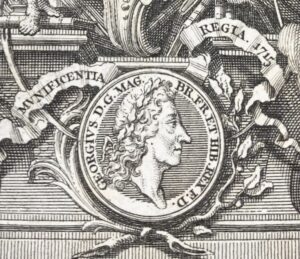
….and then donated to the Cambridge University Library.
I suddenly knew how people on Antiques Roadshow feel. The book had no formal title page, but luckily the Library’s documentation announced that it is the Deacon’s part of the hymns in the Greek Orthodox service, “collected and set to music,” and had been written “in the SLAVONICK language about the beginning of the XVIIth century.”
Fair enough, but what was the script? I was fairly sure this was not the Glagolitic I’d been looking for, because that was waning fast even by the beginning of the XVIIth century, but what the heck was it? Greek? Cyrillic?
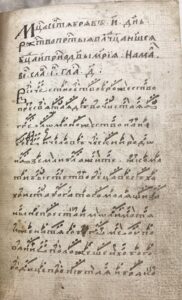
Look more closely. What are the superscript marks? Are they musical notation?? If so, why do almost all of them slope up?
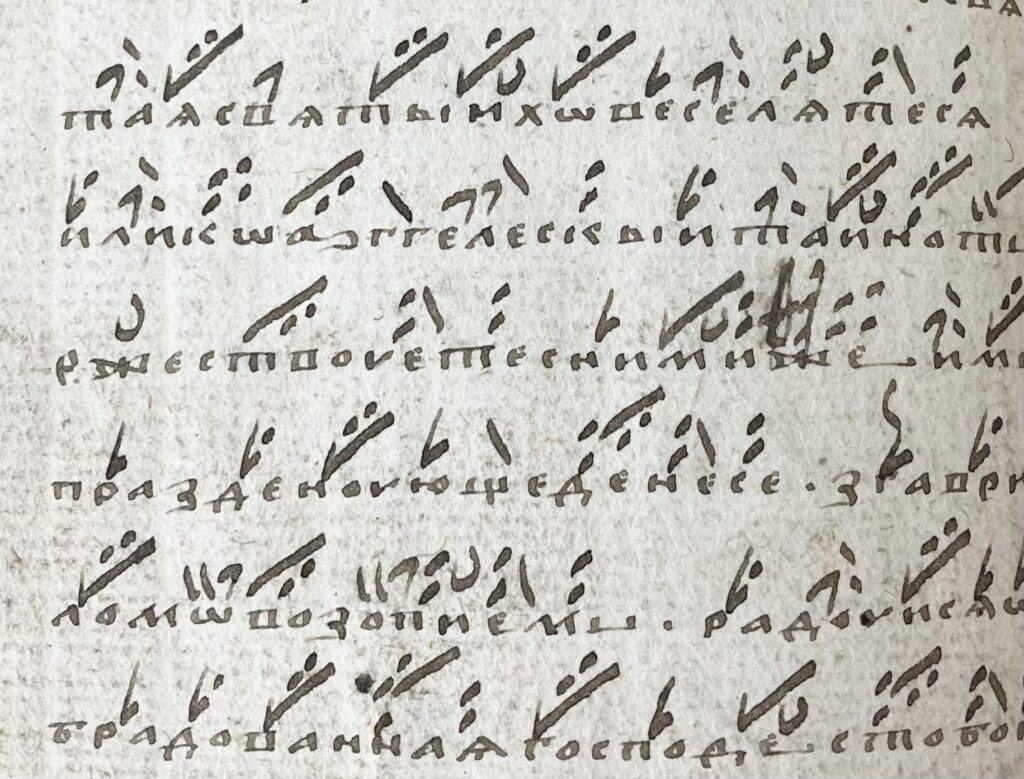
I had no clue whatsoever. This was utterly fabulous, and though the mold on the pages was beginning to awake my allergies, I couldn’t stop reading. I’ve just been reading Ewan Clayton’s book on the history of the Latin alphabet, and he said, to my surprise, that hand-copied books, especially religious works, continued long after the introduction of printing, and this was clearly one of them.
On to the second book, catalogued (Ee.1.8) as “Slavonick Psalter with Canticles.” This was larger and both ornate and beautiful.
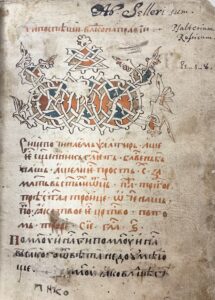
Again it didn’t have the kind of title page you’d expect from a printed book; instead, this elaborate and colorful fanfare from the days when a writer/copyist was also expected to be an illustrator/colorist.
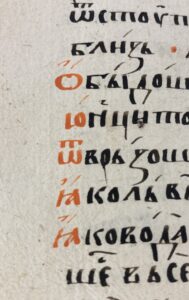
(Speaking of colors: I can’t work out the logic behind the use of color in these pages. Please enlighten me if you can.)
The capitals were just astonishing…..
But I still couldn’t figure out what the script was.
The clue was that the catalogue said “set to music,” but I didn’t see any recognizable musical scores. But my amazingly knowledgeable colleague Vyshantha figured it out: it’s called Znamenny Musical Notation. Here’s the Unicode proposal, and this is the general description from that proposal:
“Znamenny Chant is a form of unison, melismatic, liturgical singing that developed in Kievan Rus sometime in the 11th century. Until the rise of Western musical influence in the late 17th century, Znamenny Chant was the predominant form of liturgical music used in Russia and Ukraine. Following the 17th century, it remained in use by Russian Old Ritualists as well as some monasteries and parishes within the mainline Russian Orthodox Church. In recent years, beginning with the work of musicologists and liturgiologists in the late 19th century, Znamenny Chant has also become the subject of academic research.
“Traditionally Znamenny Chant is recorded using a neumatic musical notation system (in other words, a musical notation system that does not use a lined staff) called Znamenny Notation, or Stolp (“systematic”) Notation, also known, by the characteristic shape of its symbols, as Kryuki (“hooks”). While derived from a form of early Byzantine musical notation called Coislin notation, Znamenny Notation underwent a lengthy period of development over the course of five centuries, and came to form an absolutely unique writing system, graphically and theoretically distinct from the Byzantine Music Notation already encoded in Unicode.”
In the second psalter, which the catalogue estimated to be from the 16th century, the notations were simpler and thus apparently earlier, according to the Unicode proposal; in the first, the more complex symbols encoded, as they say, more complete information.
So–not Glagolitic, but an entirely different find. Which leads to the question, is musical notation a writing system, as the Unicode proposal says, or something else?
Your thoughts, please!
This research was funded by the kindness of the VIEWS Project of Cambridge University. Long may they prosper.
